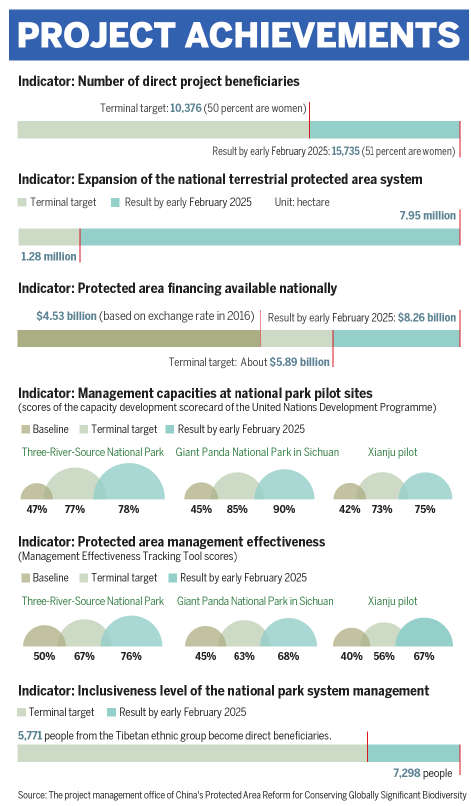C-PAR1 project makes fruitful achievements
China's protected area efforts lauded by global environment fund


Contributing to legislation
C-PAR1 stands out as a project of great significance also because of its contribution to China's legislation on biodiversity conservation, providing a rare example where research could promote national legislation. It has contributed to China's national park legislation in both top-down and bottom-up approaches.
At the national level, the project has contributed to the top-down national park legislation process. With the in-depth participation of Chief Technical Adviser Wang Yi, a member of the Standing Committee of the National People's Congress, the project's legislative specialist, Lyu Zhongmei, vice-chairman of Environmental Protection and Resources Conservation Committee of National People's Congress, key stakeholders from the MEE, the NFGA, the UNDP and famous law schools, the results of the project study have contributed 43 pages of comments for the NFGA to draft national park legislation since 2020. A draft law is now being deliberated by the 14th NPC Standing Committee.
At the provincial level, project specialists and key stakeholders engaged in the national park legislation process have collaborated to enact or revise eight national park legislation documents across three pilot sites. These efforts have significantly contributed to the development of an innovative bottom-up legislation system. Leveraging the resources of the Global Environment Facility, or GEF, and expert inputs from its projects, C-PAR1 has actively promoted and publicized the drafting and implementation of the national park law and associated regulations through diverse platforms and channels.
International significance
C-PAR1 assimilated advanced international ideas and experiences into its pilot sites, and that has enabled those sites to cultivate distinct "Chinese practices" that can be showcased both domestically and internationally. In the Three-River-Source National Park, the efforts of C-PAR1 to promote the local community to participate in the park's management by providing training opportunities have not only enriched the knowledge of trainees, but also increased their skills and incomes, benefiting 8,503 people.
The pilot park chose 28 out of 1,950 households to showcase 10 physical precaution and protection measures aimed at safeguarding themselves from wildlife encounters, while also delving into the management of human-wildlife conflicts.
In the Giant Panda National Park, C-PAR1's pilot project to involve the local community in managing the park benefited 2,960 villagers via nature education and sustainable livelihood training. With the help of C-PAR1, Heping village in Sichuan province's Yingjing county developed beekeeping, Dendrobium officinale planting, and honey and bamboo shoot production. In 2022, sales of honey and bamboo shoots earned the village 30,000 yuan ($4,092) and it produced Dendrobium officinale worth 20,000 yuan.
C-PAR1 has pioneered "community-based solutions" to promote the sustainable utilization of biodiversity. The green development initiatives in the Xianju pilot have positively impacted 1,509 participants through training focused on community-driven green development.
The C-PAR1 team has promoted its achievements through various channels and forms on important platforms, gaining much attention and having a profound effect. Multiple research results and policy recommendation reports have been published in both Chinese and English journals and submitted to the authorities of protected areas.
The project's outcomes have been praised by GEF CEO Carlos Manuel Rodriguez and Beate Trankmann, the UNDP's resident representative in China.























